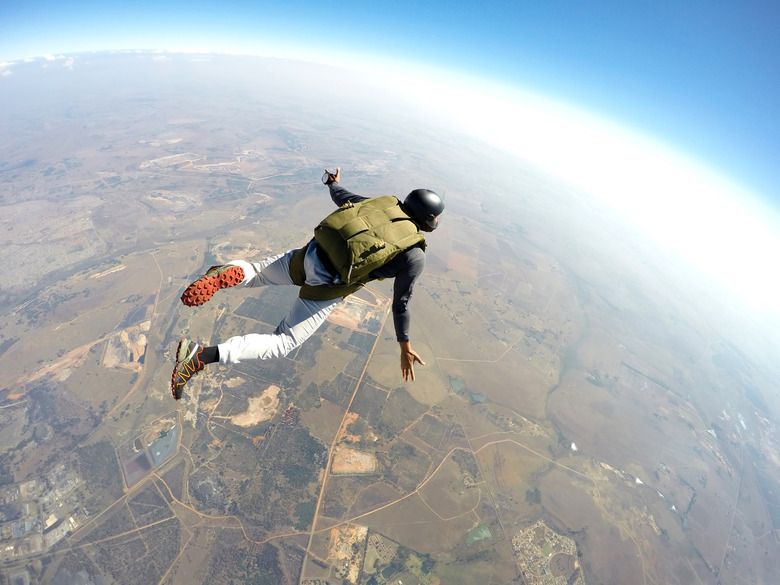How To Calculate The Distance/Speed Of A Falling Object
Galileo first posited that objects fall toward earth at a rate independent of their mass. That is, all objects accelerate at the same rate during free-fall. Physicists later established that the objects accelerate at 9.81 meters per square second, m/s^2, or 32 feet per square second, ft/s^2; physicists now refer to these constants as the acceleration due to gravity, g. Physicists also established equations for describing the relationship between the velocity or speed of an object, v, the distance it travels, d, and time, t, it spends in free-fall. Specifically, v = g * t, and d = 0.5 * g * t^2.
Step 1
Measure or otherwise determine the time, t, the object spends in free-fall. If you are working a problem from a book, this information should be specifically stated. Otherwise, measure the time required for an object to fall to the ground using a stopwatch. For purposes of demonstration, consider a rock dropped from a bridge that strikes the ground 2.35 seconds after it is released.
Step 2
Calculate the velocity of the object at the moment of impact according to v = g * t. For the example given in Step 1, v = 9.81 m/s^2 * 2.35 s = 23.1 meters per second, m/s, after rounding. Or, in English units, v = 32 ft/s^2 * 2.35 s = 75.2 feet per second, ft/s.
Step 3
Calculate the distance the object fell according to d = 0.5 * g * t^2. In keeping with the scientific order of operations, you must calculate the exponent, or t^2 term, first. For the example from Step 1, t^2 = 2.35^2 = 5.52 s^2. Therefore, d = 0.5 * 9.81 m/s^2 * 5.52 s^2 = 27.1 meters, or 88.3 feet.
Things Needed
- Stopwatch
- Calculator
TL;DR (Too Long; Didn't Read)
When actually measuring the time an object is in free-fall, repeat the measurement at least three times and average the results to minimize experimental error.
Cite This Article
MLA
Brubaker, Jack. "How To Calculate The Distance/Speed Of A Falling Object" sciencing.com, https://www.sciencing.com/calculate-distancespeed-falling-object-8001159/. 13 March 2018.
APA
Brubaker, Jack. (2018, March 13). How To Calculate The Distance/Speed Of A Falling Object. sciencing.com. Retrieved from https://www.sciencing.com/calculate-distancespeed-falling-object-8001159/
Chicago
Brubaker, Jack. How To Calculate The Distance/Speed Of A Falling Object last modified August 30, 2022. https://www.sciencing.com/calculate-distancespeed-falling-object-8001159/
